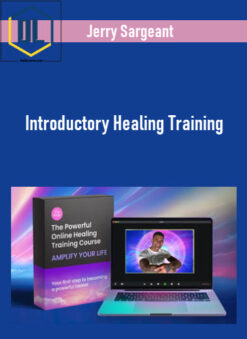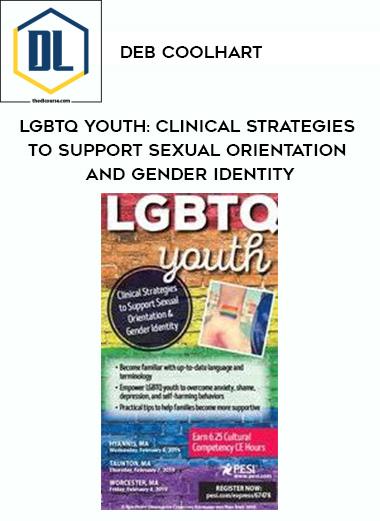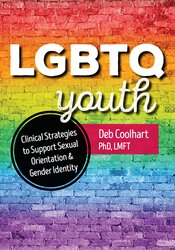-
×
 BRYAN KREUZBERGER – BREAKTHROUGH EMAIL
1 × $9.00
BRYAN KREUZBERGER – BREAKTHROUGH EMAIL
1 × $9.00 -
×
 Brian & Kam – Trading with Auction Market Theory and Volume Profiles
1 × $10.00
Brian & Kam – Trading with Auction Market Theory and Volume Profiles
1 × $10.00 -
×
 Wrong Opinion – Man Explaining: The Manual For Women
1 × $13.00
Wrong Opinion – Man Explaining: The Manual For Women
1 × $13.00 -
×
 Drniki – Find Alpha Course – How to Find New Crypto Projects
1 × $70.00
Drniki – Find Alpha Course – How to Find New Crypto Projects
1 × $70.00 -
×
 Greg Greenway – Social Supremacy Blueprint
1 × $9.00
Greg Greenway – Social Supremacy Blueprint
1 × $9.00 -
×
 Jon Benson – VSL Fast Track 2018
1 × $48.00
Jon Benson – VSL Fast Track 2018
1 × $48.00 -
×
 Matt Clark and Jason Katzenback – Amazing Selling Machine 11
1 × $9.00
Matt Clark and Jason Katzenback – Amazing Selling Machine 11
1 × $9.00 -
×
 Justin Brooke – Growth Operator Blueprint
1 × $33.00
Justin Brooke – Growth Operator Blueprint
1 × $33.00 -
×
 Pendulum Alchemy – Emotional Healing With Pendulums 2.0
1 × $29.00
Pendulum Alchemy – Emotional Healing With Pendulums 2.0
1 × $29.00 -
×
 Joe Dispenza – The Magic Walk: A Guided Children’s Walking Meditation
1 × $10.00
Joe Dispenza – The Magic Walk: A Guided Children’s Walking Meditation
1 × $10.00 -
×
 Anastasia – Pinterest SEO Traffic Secrets
1 × $17.00
Anastasia – Pinterest SEO Traffic Secrets
1 × $17.00 -
×
 Kirill Eremenko – Forex Robots – Expect To Earn 175% P.A. Forex Robot Included
1 × $9.00
Kirill Eremenko – Forex Robots – Expect To Earn 175% P.A. Forex Robot Included
1 × $9.00 -
×
 John Haas – Evolve Your Breathing
1 × $9.00
John Haas – Evolve Your Breathing
1 × $9.00 -
×
 Olga Morales – Astrology for Gann Traders
1 × $19.00
Olga Morales – Astrology for Gann Traders
1 × $19.00 -
×
 Brent Smith – Bulletproof Banter
2 × $17.00
Brent Smith – Bulletproof Banter
2 × $17.00 -
×
 Digital Income Project – Content MBA
1 × $33.00
Digital Income Project – Content MBA
1 × $33.00 -
×
 Jerry Sargeant – Introductory Healing Training
1 × $10.00
Jerry Sargeant – Introductory Healing Training
1 × $10.00 -
×
 Patricia Taylor – Expand Her Orgasm Tonight – Expanded Edition
3 × $12.00
Patricia Taylor – Expand Her Orgasm Tonight – Expanded Edition
3 × $12.00 -
×
 Product University – Unique Amazon Strategy
1 × $92.00
Product University – Unique Amazon Strategy
1 × $92.00 -
×
 Tom Torero, Jon Matrix & Yad – Daygame.com: Date Against The Machine
1 × $10.00
Tom Torero, Jon Matrix & Yad – Daygame.com: Date Against The Machine
1 × $10.00 -
×
 Hypnotica – 7 Day Sexual Mastery Accelerator
1 × $9.00
Hypnotica – 7 Day Sexual Mastery Accelerator
1 × $9.00 -
×
 FXC Trading – Holy Grail
1 × $35.00
FXC Trading – Holy Grail
1 × $35.00 -
×
 Tom Kenyon – The Hathor Material
1 × $17.00
Tom Kenyon – The Hathor Material
1 × $17.00 -
×
 Jack Duncan – The DREAM Business
1 × $9.00
Jack Duncan – The DREAM Business
1 × $9.00 -
×
 Derek Rake – Shogun Sequences Handbook Volume 2
1 × $19.00
Derek Rake – Shogun Sequences Handbook Volume 2
1 × $19.00 -
×
 Apteros Trading – Learn to Scalp
1 × $79.00
Apteros Trading – Learn to Scalp
1 × $79.00 -
×
 Rob Walling – The SaaS Launchpad
1 × $39.00
Rob Walling – The SaaS Launchpad
1 × $39.00 -
×
 John Randolph Price – The Manifestation Process: 10 Steps to the Fulfillment of Your De
1 × $27.00
John Randolph Price – The Manifestation Process: 10 Steps to the Fulfillment of Your De
1 × $27.00 -
×
 The Modern Man – The Flow Audiobook
1 × $37.00
The Modern Man – The Flow Audiobook
1 × $37.00 -
×
 Ross Jeffries – Speed Seduction: The Final Awakening
1 × $43.00
Ross Jeffries – Speed Seduction: The Final Awakening
1 × $43.00 -
×
 Peggy McColl – Skipping Levels All Access Pass
4 × $9.00
Peggy McColl – Skipping Levels All Access Pass
4 × $9.00 -
×
 Adam Eason – Brain In Your Underwear New Verslon
2 × $9.00
Adam Eason – Brain In Your Underwear New Verslon
2 × $9.00 -
×
 Victor Casler – Personalized DeFi Crash Course
1 × $10.00
Victor Casler – Personalized DeFi Crash Course
1 × $10.00 -
×
 Juliette Kristine – The Surrender Approach
1 × $55.00
Juliette Kristine – The Surrender Approach
1 × $55.00 -
×
 Joint Venture Equity vs. Fund Structures™
1 × $135.00
Joint Venture Equity vs. Fund Structures™
1 × $135.00 -
×
 Tammy Chambless – Multiple Entry Iron Condor
1 × $79.00
Tammy Chambless – Multiple Entry Iron Condor
1 × $79.00 -
×
 2 Girls Teach Sex - Extreme Female Orgasms
1 × $29.90
2 Girls Teach Sex - Extreme Female Orgasms
1 × $29.90 -
×
 Jason Julius – Rock Hard Code
2 × $16.00
Jason Julius – Rock Hard Code
2 × $16.00 -
×
 Personal Brand Creator Pro
1 × $85.00
Personal Brand Creator Pro
1 × $85.00 -
×
 The Commercial Investor – CRE Matchmaker
1 × $9.00
The Commercial Investor – CRE Matchmaker
1 × $9.00 -
×
 Dandrew Media – Consulting Event – Recordings
1 × $27.00
Dandrew Media – Consulting Event – Recordings
1 × $27.00 -
×
 Rich Shy Girl – The Formula
1 × $9.00
Rich Shy Girl – The Formula
1 × $9.00 -
×
 Ross Jeffries – New Code Next Generation
1 × $21.00
Ross Jeffries – New Code Next Generation
1 × $21.00 -
×
 Allie Bloyd – The Local Lead Generation Masterclass
1 × $19.00
Allie Bloyd – The Local Lead Generation Masterclass
1 × $19.00 -
×
 Ross Jeffries – Speed Seduction 5.0
1 × $9.00
Ross Jeffries – Speed Seduction 5.0
1 × $9.00 -
×
 Felix Economakis – 4Rs Model
1 × $69.00
Felix Economakis – 4Rs Model
1 × $69.00 -
×
 Taylor Jackson – Creating Profitable YouTube Videos
2 × $20.00
Taylor Jackson – Creating Profitable YouTube Videos
2 × $20.00 -
×
 Sean Flanagan – Pre- Vacant House Goldmine
1 × $28.00
Sean Flanagan – Pre- Vacant House Goldmine
1 × $28.00 -
×
 Kyle Milligan – The Process – A Draft By Draft Copywriting Walkthrough
1 × $49.00
Kyle Milligan – The Process – A Draft By Draft Copywriting Walkthrough
1 × $49.00 -
×
 Dan Kennedy - Copywriting Mastery and Sales Thinking Boot Camp
1 × $75.00
Dan Kennedy - Copywriting Mastery and Sales Thinking Boot Camp
1 × $75.00 -
×
 Jerry Acuff – Selling Excellence by Thinking Like a Customer
1 × $9.00
Jerry Acuff – Selling Excellence by Thinking Like a Customer
1 × $9.00 -
×
 Cris Chico – Find Motivated Sellers Online
1 × $54.95
Cris Chico – Find Motivated Sellers Online
1 × $54.95 -
×
 Lifestyle Unlimited Real Estate Passive Income
1 × $80.00
Lifestyle Unlimited Real Estate Passive Income
1 × $80.00 -
×
 Nadine Lee – Erotic Pulse
1 × $194.00
Nadine Lee – Erotic Pulse
1 × $194.00 -
×
 DAN BACON – Alpha Male Power
1 × $45.00
DAN BACON – Alpha Male Power
1 × $45.00 -
×
 John Overdurf – Splitting Synesthesias within the Rhizome
1 × $42.00
John Overdurf – Splitting Synesthesias within the Rhizome
1 × $42.00 -
×
 George Hutton – Tongue Fu
1 × $20.00
George Hutton – Tongue Fu
1 × $20.00 -
×
 Jack Hutson – Jack’s Blowjob Lessons
2 × $14.00
Jack Hutson – Jack’s Blowjob Lessons
2 × $14.00 -
×
 Jared James – Blueprint For Real Estate Success
1 × $75.00
Jared James – Blueprint For Real Estate Success
1 × $75.00 -
×
 John Demartini – The Loving Relationship Formula
1 × $30.00
John Demartini – The Loving Relationship Formula
1 × $30.00 -
×
 John Assaraf – Winning The Inner Game of Money
1 × $46.00
John Assaraf – Winning The Inner Game of Money
1 × $46.00 -
×
 Wall Street Prep – Real Estate (REIT) Modeling
1 × $140.00
Wall Street Prep – Real Estate (REIT) Modeling
1 × $140.00 -
×
 Gene Ang – Transpersonal Chakra
1 × $15.00
Gene Ang – Transpersonal Chakra
1 × $15.00 -
×
 Alison Armstrong – The Heart of Partnership
1 × $92.00
Alison Armstrong – The Heart of Partnership
1 × $92.00 -
×
 BowesPublishing – The EVERYTHING Bundle 2024 (KDP)
1 × $9.00
BowesPublishing – The EVERYTHING Bundle 2024 (KDP)
1 × $9.00 -
×
 JACK ELLIS (DANTALION JONES) – BLACK MAGIC TANTRA
1 × $5.00
JACK ELLIS (DANTALION JONES) – BLACK MAGIC TANTRA
1 × $5.00 -
×
 Kenrick Cleveland – Structure Of Thought
1 × $9.00
Kenrick Cleveland – Structure Of Thought
1 × $9.00 -
×
 David Snyder – Defense Against The Dark Arts
1 × $47.00
David Snyder – Defense Against The Dark Arts
1 × $47.00 -
×
 ICBCH – Richard Nongard – Gold Level Hypnosis Certification Course
1 × $70.00
ICBCH – Richard Nongard – Gold Level Hypnosis Certification Course
1 × $70.00
Buy With Coupon: DLC25 (-25%)
LGBTQ Youth: Clinical Strategies to Support Sexual Orientation and Gender Identity – Deb Coolhart
$199.00 Original price was: $199.00.$37.00Current price is: $37.00.
Product Delivery : Instant Deliver
Description
LGBTQ Youth: Clinical Strategies to Support Sexual Orientation and Gender Identity – Deb Coolhart
Salepage: LGBTQ Youth: Clinical Strategies to Support Sexual Orientation and Gender Identity – Deb Coolhart
Recently, the LGBTQ community has been in the national spotlight for challenging issues like which bathroom a transgender person should use, increased youth suicide rates, and the Pulse nightclub tragedy. No wonder youth in our communities are scared to be open about who they are.
As a clinician, how are you supposed to help an LGBTQ youth when their parents are just not on board? Also as a clinician, do you know what type of treatment techniques to suggest when a transgender youth wants to prolong hitting puberty? These are the types of questions clinicians struggle with.
Join expert and author, Deb Coolhart, Ph.D., LMFT as she draws on her nearly 20 years of working with LGBTQ youth. Deb will show you effective clinical strategies for:
- Coming out
- Bullying
- Suicide, anxiety, shame, depression, self-harming
- Making healthy choices
- Thriving in school
- Options for guiding gender transition
Working with these youth and families can be complex, requiring the balance of many seemingly opposing viewpoints. As a clinician, there is nothing more rewarding than facilitating these changes and watching families discover their own path towards understanding.
Help LGBTQ kids and adolescents know that it’s their right to be themselves!
- Assess how school, family and social pressures impact the formation of an LGBTQ youth’s identity.
- Support the coming out process with youth clients and facilitate family interventions to create safety, support, space, and acceptance.
- Analyze LGBTQ youth clients’ level of risk and protective factors for developing symptoms of anxiety and depression, as well as self-harm behaviors and suicidal ideation.
- Assess family dynamics of the client to determine potential to work towards increased acceptance and support.
- Assist transgender clients in the readiness process for medical gender transition and compose letters of support for clients to obtain medical gender transition treatments.
- Foster LGBTQ affirmative school environments with strategies for working in conjunction with school staff, administration and parents.
Coming Into an LGBTQ Identity and Coming Out to Others
- Identity development
- Internalized homo-bi-trans-phobia
- The decision to come out
- Fears in the coming out process
- Youths’ safety
Clinical Considerations
- Intervening in depression, shame, self-harming behaviors, and suicidality
- Addressing anxiety
- Approaching transgender compared to LGBQ
- Importance of family acceptance
- Intersections of other cultural identities
- Research limitations and risks of psychotherapeutic approaches
Differences within the LGBTQ Spectrum
- Lesbian Youth
- Confronting invisibility
- Facilitating positive self-esteem
- Gay Youth
- Discussing gender role expectations
- Sexual health
- Substance use
- Bisexual Youth
- Understanding bisexuality as a legitimate identity
- Harmfulness of bisexual erasure
- Transgender Youth
- Assessing need/desire for gender transition
- Exploring options for gender expression
- Questioning Youth
- Making space for exploration and fluidity
- Reducing pressure to self-label
Working with Families
- Coming Out
- Creating space for parents’ reactions and resistance
- Supporting youths’ LGBTQ identity
- Helping parents work towards increased acceptance and support
- Navigating religious beliefs
- Supporting parents’ own process of coming out
- Attending to the needs of siblings and extended family members
- Facilitating support networks
LGBTQ-Affirmative School Environments
- Importance of safe schools for youths’ well-being
- Assisting parents with school advocacy
- Coaching youth towards self-advocacy
- Dealing with bullying and mistreatment
- Considerations for transgender youth
Delivery Policy
When will I receive my course?
You will receive a link to download your course immediately or within 1 to 21 days. It depends on the product you buy, so please read the short description of the product carefully before making a purchase.
How is my course delivered?
We share courses through Google Drive, so once your order is complete, you'll receive an invitation to view the course in your email.
To avoid any delay in delivery, please provide a Google mail and enter your email address correctly in the Checkout Page.
In case you submit a wrong email address, please contact us to resend the course to the correct email.
How do I check status of my order?
Please log in to TheDLCourse account then go to Order Page. You will find all your orders includes number, date, status and total price.
If the status is Processing: Your course is being uploaded. Please be patient and wait for us to complete your order. If your order has multiple courses and one of them has not been updated with the download link, the status of the order is also Processing.
If the status is Completed: Your course is ready for immediate download. Click "VIEW" to view details and download the course.
Where can I find my course?
Once your order is complete, a link to download the course will automatically be sent to your email.
You can also get the download link by logging into your TheDLCourse account then going to Downloads Page.
Related products
-58%
-70%
-60%
-65%
-69%
-73%
-95%
-92%










